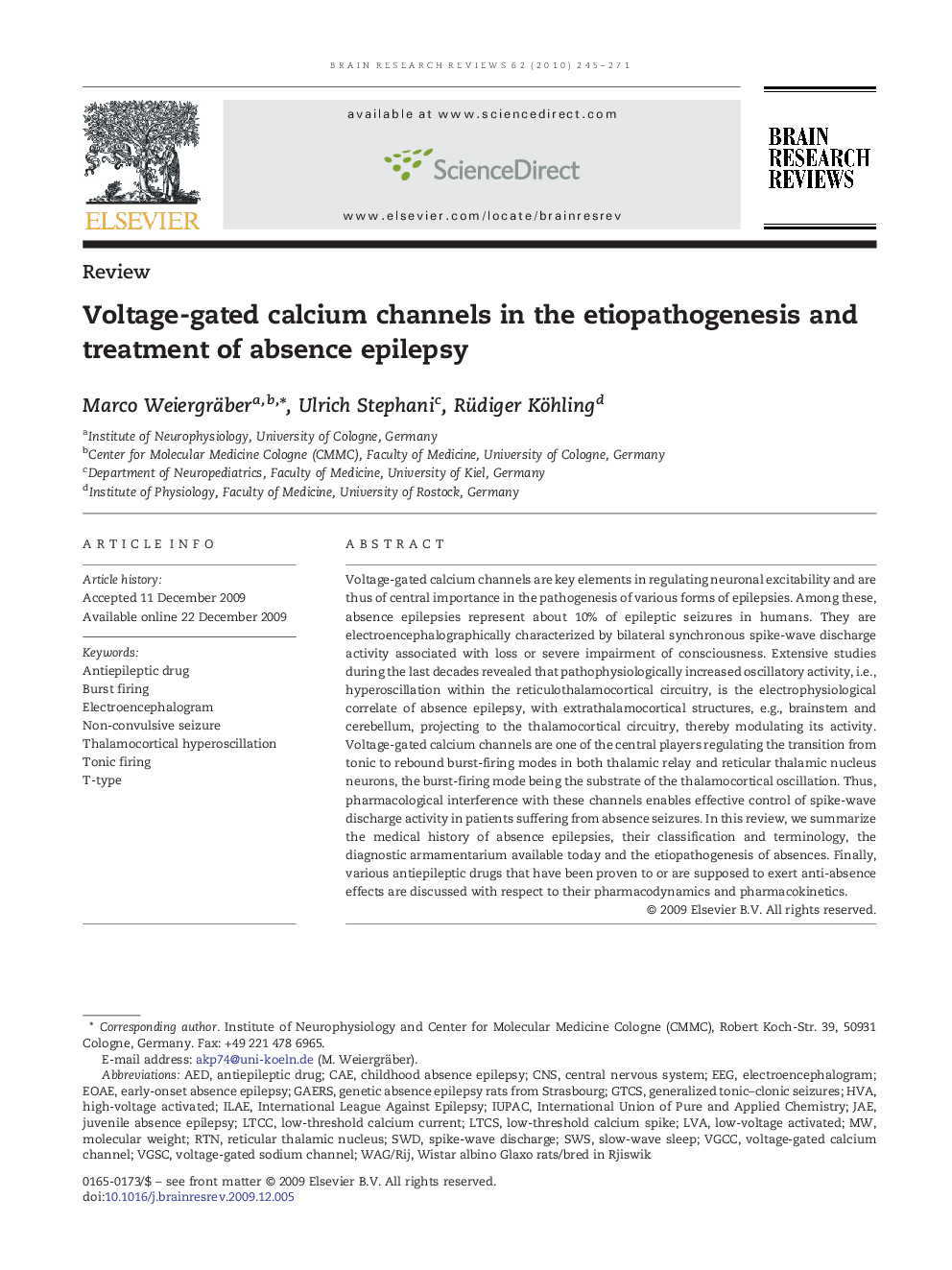| Article ID | Journal | Published Year | Pages | File Type |
|---|---|---|---|---|
| 4333724 | Brain Research Reviews | 2010 | 27 Pages |
Voltage-gated calcium channels are key elements in regulating neuronal excitability and are thus of central importance in the pathogenesis of various forms of epilepsies. Among these, absence epilepsies represent about 10% of epileptic seizures in humans. They are electroencephalographically characterized by bilateral synchronous spike-wave discharge activity associated with loss or severe impairment of consciousness. Extensive studies during the last decades revealed that pathophysiologically increased oscillatory activity, i.e., hyperoscillation within the reticulothalamocortical circuitry, is the electrophysiological correlate of absence epilepsy, with extrathalamocortical structures, e.g., brainstem and cerebellum, projecting to the thalamocortical circuitry, thereby modulating its activity. Voltage-gated calcium channels are one of the central players regulating the transition from tonic to rebound burst-firing modes in both thalamic relay and reticular thalamic nucleus neurons, the burst-firing mode being the substrate of the thalamocortical oscillation. Thus, pharmacological interference with these channels enables effective control of spike-wave discharge activity in patients suffering from absence seizures. In this review, we summarize the medical history of absence epilepsies, their classification and terminology, the diagnostic armamentarium available today and the etiopathogenesis of absences. Finally, various antiepileptic drugs that have been proven to or are supposed to exert anti-absence effects are discussed with respect to their pharmacodynamics and pharmacokinetics.
